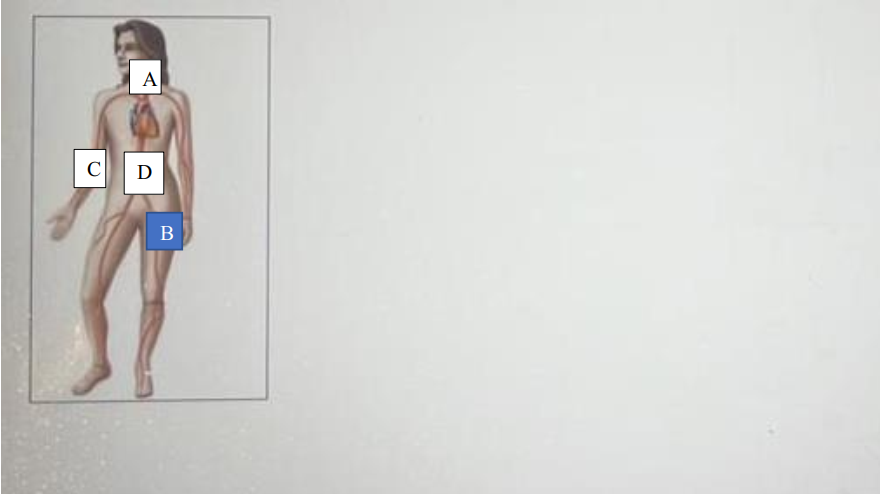To auscultate for a carotid bruit, the nurse places the stethoscope at what location (Select the correct location on the image. To change, click on a new location.)

A
B
C
D
The Correct Answer is A
A. This is the correct area of auscultating for carotid bruit.
B. This is the area of auscultation for femoral artery bruit.
C. This is the brachial artery region.
D. This is the abdominal aorta
Nursing Test Bank
Naxlex Comprehensive Predictor Exams
Related Questions
Correct Answer is A
Explanation
A. This is the correct area of auscultating for carotid bruit.
B. This is the area of auscultation for femoral artery bruit.
C. This is the brachial artery region.
D. This is the abdominal aorta
Correct Answer is C
Explanation
A. When the client has ankle edema Ankle edema may indicate fluid retention, which is common during pregnancy but is not directly related to the assessment of deep tendon reflexes (DTRs).
B. Within the first trimester of pregnancy: Assessing DTRs within the first trimester of pregnancy is not specifically indicated unless there are other signs or symptoms of concern.
C. If the client has an elevated blood pressure: Assessment of DTRs is particularly important if the client has an elevated blood pressure, as it may indicate preeclampsia, a serious pregnancy complication characterized by hypertension and proteinuria.
D. During admission to labor and delivery: While assessment of DTRs may be included in the admission assessment to labor and delivery, it is particularly important to assess DTRs if the client has an elevated blood pressure, as it may indicate preeclampsia.
Whether you are a student looking to ace your exams or a practicing nurse seeking to enhance your expertise , our nursing education contents will empower you with the confidence and competence to make a difference in the lives of patients and become a respected leader in the healthcare field.
Visit Naxlex, invest in your future and unlock endless possibilities with our unparalleled nursing education contents today
Report Wrong Answer on the Current Question
Do you disagree with the answer? If yes, what is your expected answer? Explain.
Kindly be descriptive with the issue you are facing.
